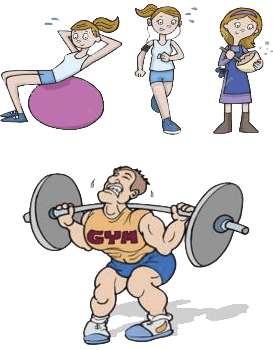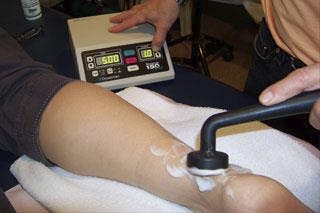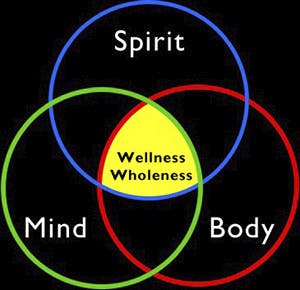$60 billion dollars spent on diet products annually
Market Data Enterprises, 2012
US News - Money, Jan. 2, 2013
"95% of all diets fail" Is this true?
- based on a 1959 study by Stunkard and McLaren
- Hume but has been reinforced by many clinical studies over the years.
We all know someone who has lost weight and have kept it off. How did they do this? We also know those who have lost weight and gained it back, or, have tried to lose weight and not had success. Most studies consider a successful diet based on the following criteria; losing 30# and keeping it off for over a year.

Is there a trick? What am I doing wrong? What type of diet should I be on? What do I do?????????
Eric Westman, Duke MD has repeatedly studied and consistently found that a Low Carb and High Fat diet helps individuals lose weight (The New Atkins Diet). Dr. William Yancy of Duke University has also found that a "low-carb diet is just as powerful as the weight loss drug Alli".
A study by, Hagan, Wong, and Whittam (1986) demonstrated that diet alone helped people lose weight and that the exercise alone did not help individuals lose weight; therefore, diet is the most important aspect.
In contrast, Sopko et al. (1985) found that both the diet group and exercise group lost the same amount of weight if exercise caloric expenditure was equal to the reduced caloric intake by diet I could go on and on. But let me summarize what many researchers have studied and theorized.
Exercising can reduce risk of Type 2 Diabetes mellitus (Pratt, et al, 1995), reduce coronary heart disease (Grundy et al, 1999, NIH, 1998 Ross and Janson, 1999), and reduce depression (Babyak, et al, 1999).
Diet... there are so many! Which one is right for you? I will hopefully give you some insight on part 2 of my blog. First, I feel that it is more important to strategize, plan and create goals. I will review this with you in part 1 of my 2-part series. You may be surprised! Once you strategize, plan, create goals, and assess you may find that developing your own diet will be best suited for you!
Comparing Success in Business with Success in Weight Loss
So how do the most successful business, become successful? It always helps to have a little bit of luck J, but we are taught that most are successful because they formulate a plan, put it in writing, stick to it and make changes (or progressions) as they grow. Most are in it for a long haul and take a vested interest in the business.
So I have taken what I have learned and have spent many years on determining what the best strategies are to own, run, grow, and market my business. I found that the strategies that work best for me are the ones I put on paper. I then establish goals and check lists and put them in writing. I then mend my strategies as goals are accomplished (not accomplished) or as the culture of my business changes. So what they teach truly works for me.
So, should we do the same for diet and exercise? My answer is YES!!!!
Come Up With A Plan
This plan should be long term! Don't state, "I want to lose 20 pounds by summer to fit into my bathing suit." Go at a slow and steady pace. If you set too lofty of a goal, it is too easy to get discouraged and walk away from it. You are also limiting yourself to just one aspect of diet. "I want to look good in a bathing suit". Don't limit yourself to one goal (i.e., look good in my bathing suit). You need to have short-term goals based on your long-term goals. Make sure you set several long-term goals. That way if you have 4 goals and you are achieving one, you are still successful. Also, make sure that you keep everything in WRITING and keep it in an area that you can see on a daily bases.
Focus On Health And Not Just Weight As A Number
You can lower your % body fat without losing weight. There have been studies that show that if you exercise and don't lose weight, you still lower your risk for heart disease and other comorbidities including diabetes mellitus, anxiety and depression. Knowing this can help drive you to continue to exercise and diet. From what I have read and reviewed a diet similar to The Mediterranean Diet is a good place to start.
Have A Partner
This may be why Health Coaching is the new fad. If you have someone there to support you, advise you, push you (if needed), or just to listen to you it may help you through times you stray or don't meet your goals.
Stick With The Plan
Make sure you have a diet and an exercise routine that you can stick with - even if it is just reducing caloric intake by 100 calories a day. When we exercise you don't start with a 60-minute workout followed by a 20 mile run. You start slowly and work up to it. AGAIN, created goals you can achieve.
Other Factors To Consider
Your ability to lose weight is also affected by stress, sleep patterns, allergies, genetic make-up, and environment. Most of these factors you can control!
I hope this first installment gives you a few important things to consider when coming up with your strategy to create a healthier you! We need to put ourselves in a position to succeed. My next blog will dive deeper into what diets and how much exercise is a good place for you start. So stay tune and I hope my blog helps with your mindset.
Earl Cox, PT, MS, OCS, CSCS






